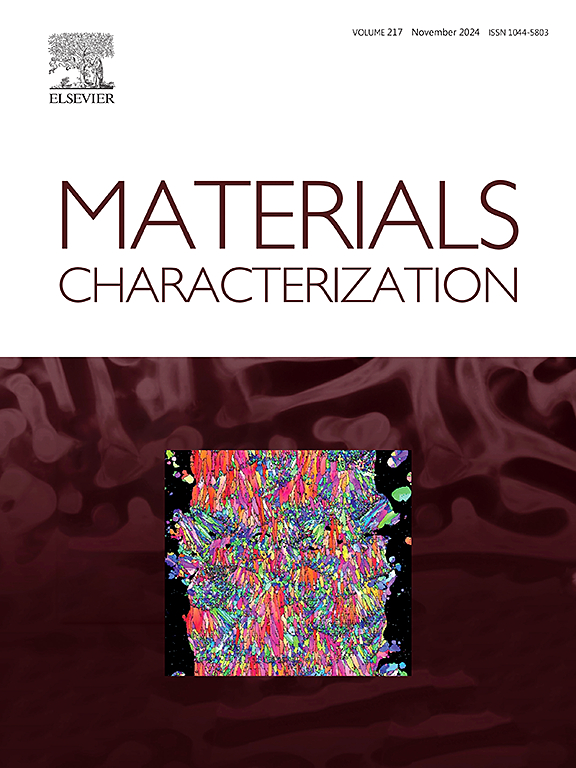激光粉末床熔合tib2增强Al-2618薄壁的组织与拉伸性能
IF 5.5
2区 材料科学
Q1 MATERIALS SCIENCE, CHARACTERIZATION & TESTING
引用次数: 0
摘要
研究了TiB2功能化粉末提高Al-2618铝合金的加工性能和力学性能。在铝合金粉末中添加TiB2粒子的方法有四种:1)低压等离子体,2)低能和3)高能机械混合,4)气体雾化预合金化。对复合粉末进行了综合表征,然后对样品进行了激光粉末床熔合(LPBF)制备。所有粉末原料均可实现高密度打印复合材料,TiB2分散均匀,无裂纹。硼化物有效地促进了α-Al相的非均相形核,抑制了外延生长,形成了精细的等轴组织。在对不同热处理路线(T6和T5)进行初步研究的基础上,进行了数字图像相关(DIC)辅助的拉伸试验,以评估其力学性能。结果表明,热处理后的屈服强度和极限强度有显著提高。尽管塑性较低,但由于纳米级TiB2的形成,预合金粉末表现出优异的力学性能。本文章由计算机程序翻译,如有差异,请以英文原文为准。
Microstructure and tensile properties of TIB2-reinforced Al-2618 thin walls produced by laser powder bed fusion
This study focuses on enhancing the processability and mechanical properties of the Al-2618 Al alloy by functionalizing powder with TiB2. Four different methods have been used to add TiB2 particles to the Al alloy powder: i) low-pressure plasma, ii) low-energy and iii) high-energy mechanical mixing, and iv) pre-alloying by gas-atomization. Comprehensive characterization of composite powders was conducted, followed by Laser Powder Bed Fusion (LPBF) manufacturing of samples. High-density printed composites were achieved with all powder feedstocks, with homogeneous dispersion of TiB2 and absence of cracks. Borides effectively promoted heterogeneous nucleation of α-Al phase, suppressing epitaxial growth and leading to a fine equiaxed microstructure. Upon preliminary study on different heat-treatment routes (T6 and T5), tensile tests aided by Digital Image Correlation (DIC) have been performed to assess the mechanical properties. Results show significant enhancements in yield and ultimate strengths post-heat treatments. Despite lower ductility, pre-alloyed powder exhibited superior mechanical performance due to nano-metric TiB2 formation.
求助全文
通过发布文献求助,成功后即可免费获取论文全文。
去求助
来源期刊

Materials Characterization
工程技术-材料科学:表征与测试
CiteScore
7.60
自引率
8.50%
发文量
746
审稿时长
36 days
期刊介绍:
Materials Characterization features original articles and state-of-the-art reviews on theoretical and practical aspects of the structure and behaviour of materials.
The Journal focuses on all characterization techniques, including all forms of microscopy (light, electron, acoustic, etc.,) and analysis (especially microanalysis and surface analytical techniques). Developments in both this wide range of techniques and their application to the quantification of the microstructure of materials are essential facets of the Journal.
The Journal provides the Materials Scientist/Engineer with up-to-date information on many types of materials with an underlying theme of explaining the behavior of materials using novel approaches. Materials covered by the journal include:
Metals & Alloys
Ceramics
Nanomaterials
Biomedical materials
Optical materials
Composites
Natural Materials.
 求助内容:
求助内容: 应助结果提醒方式:
应助结果提醒方式:


